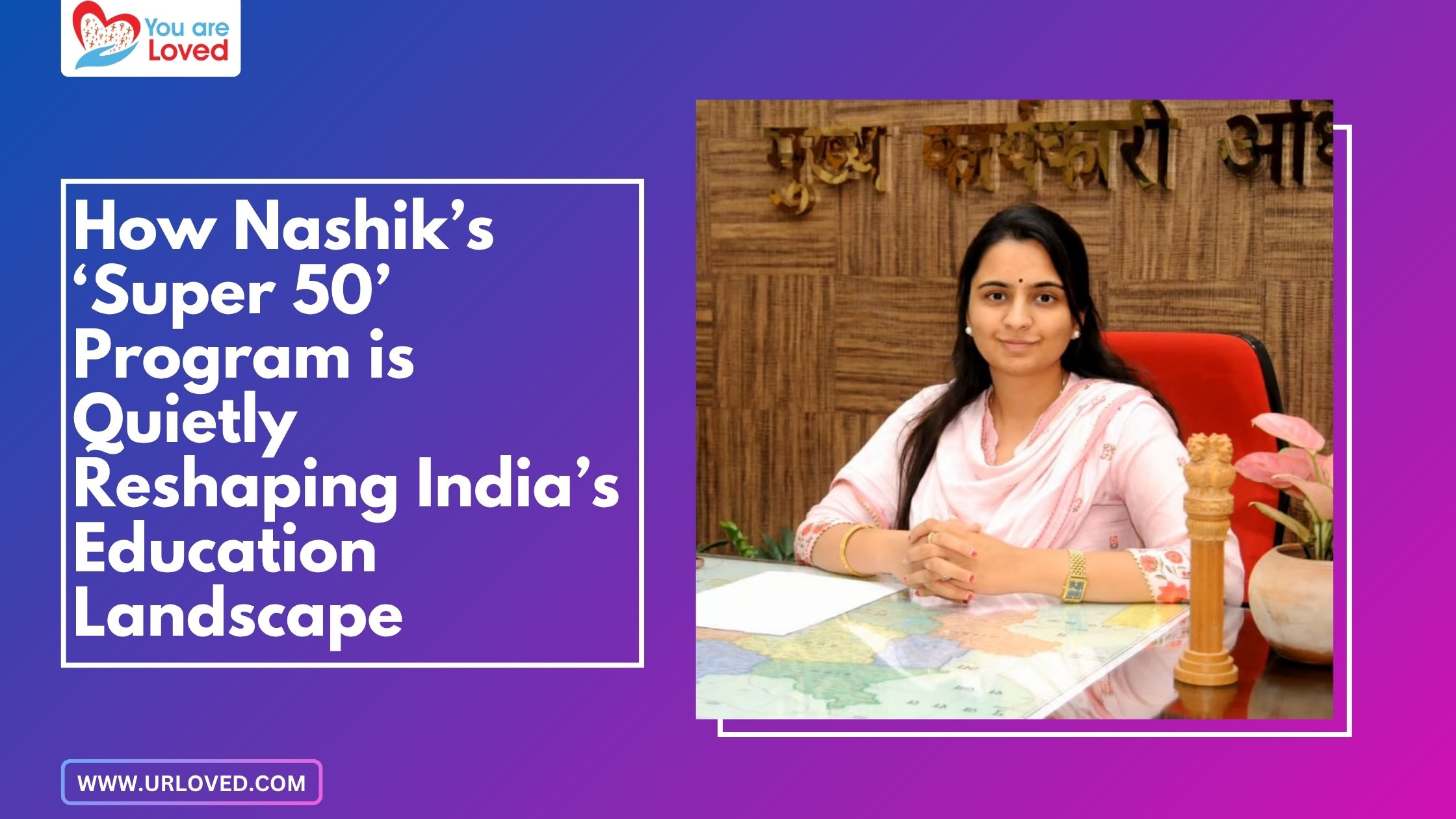
How Nashik’s ‘Super 50’ Program is Quietly Reshaping India’s Education Landscape
In the heart of rural Maharashtra, far from the coaching hubs of Kota and the tech corridors of Bengaluru, a quiet revolution is unfolding—one that could redefine how India discovers and nurtures talent from its most underserved communities.
Earlier this year, a group of students from government-run Zilla Parishad (ZP) schools in Nashik district achieved what many would consider improbable: four of them secured seats at the prestigious Indian Institutes of Technology (IITs), while another made it into IIIT Nagpur. These aren’t students from elite urban schools or families with resources to afford high-end coaching. They are the first crop of achievers from a unique pilot project called ‘Super 50’, launched by the Nashik Zilla Parishad in 2022.
What Is the Super 50 Program?
The Super 50 initiative was envisioned and spearheaded by ZP CEO Ashima Mittal, with a clear objective—to bridge the gap between potential and opportunity for rural and tribal students belonging to Scheduled Caste (SC), Scheduled Tribe (ST), and Economically Weaker Sections (EWS). These students, despite their academic promise, often struggle to break into top-tier institutions due to systemic disadvantages and lack of access to quality preparatory resources.
Super 50 seeks to change that narrative.
The programme, launched in the 2022–23 academic year, identified 50 meritorious students from ZP schools through a competitive entrance exam. These students were then offered two years of fully sponsored, intensive coaching for national-level entrance exams like JEE (for engineering) and NEET (for medicine). The model is simple but powerful: identify raw potential early, provide structured academic support, and nurture it over a sustained period.
Today, just two years later, the results are speaking for themselves.
Meet the Change-Makers: Students Who Made It to IITs and IIIT
Each of the selected students has a compelling story that reflects resilience, determination, and the transformative impact of structured support.
- Vrushali Waghmare (Manmad): Set to pursue Electronics and Telecommunications at IIT Dhanbad, Vrushali’s journey from a modest background to one of India’s top tech institutes is a powerful example of what empowerment looks like.
- Dimple Bagul (Kalwan): Admitted to Electrical Engineering at IIT Kharagpur, Dimple’s achievement is a milestone not just for her family, but for her entire community.
- Megha Dahale (Trimbakeshwar): With a passion for innovation in food systems, Megha has chosen Food Engineering at IIT Kharagpur—a domain rarely explored by students from rural areas.
- Akanksha Shejwal (Nihad): She will be studying Chemical Science at IIT Dhanbad, opening doors to a future in research and sustainability.
- And one more student—whose name hasn’t been disclosed publicly—has secured admission to IIIT Nagpur, further broadening the program’s success.
A Blueprint for Equitable Education Reform
The significance of this success goes far beyond the numbers. These admissions signal a deeper systemic shift—where the focus is not just on access to education, but on access to excellence. By integrating high-quality coaching within the public education system, Super 50 is proving that academic brilliance exists everywhere—what’s often missing is opportunity.
This programme also serves as a counter-narrative to the often elitist ecosystem of IIT preparation. It’s a reminder that world-class talent doesn’t need world-class infrastructure—just world-class intent, mentorship, and sustained support.
In fact, following the initial success, the programme has now expanded to include 110 students, with 55 receiving coaching for medical entrance exams and another 55 for engineering. It is evolving from a pilot into a robust model for scalable, inclusive talent development
Leadership That Walks the Talk
ZP CEO Ashima Mittal, the driving force behind this initiative, described the recent results as “a matter of pride for Nashik district.” In her words:
“The fact that children from rural and tribal backgrounds have secured seats in the country’s top institutions is not just a personal success for them—it’s the beginning of social transformation. This is about building confidence, breaking cycles of disadvantage, and rewriting futures.”
Her commitment to scaling the programme is clear, and there are already plans in motion to include more students in future batches, along with improving digital infrastructure, mentorship access, and post-admission career support.
Why This Matters: Lessons for Policymakers and Educators
The success of Super 50 raises some important questions for policymakers, educators, and institutions across India:
- What if similar programs were implemented across every district?
- How many more Vrushalis, Dimples, Meghas, and Akankshas could rise to national prominence?
- Can we stop viewing IITs and IIITs as elite destinations and instead start building pipelines that reach the grassroots?
The answers lie in replicable models like Super 50. This initiative reminds us that real educational reform doesn’t always need massive budgets—it needs clarity of vision, strong leadership, and a belief in the untapped potential of every child.
Final Thoughts: This Is Just the Beginning
As India pushes forward in its mission to become a knowledge-driven economy, it is critical that the next wave of engineers, doctors, and innovators come not just from privileged backgrounds, but from the heartlands of India.
The Super 50 programme in Nashik has given us a blueprint of what that future can look like—one where talent meets opportunity, and aspiration meets achievement.
And for those who still believe that only private institutions or urban setups can produce IIT toppers, these five students from rural Maharashtra just proved them wrong.